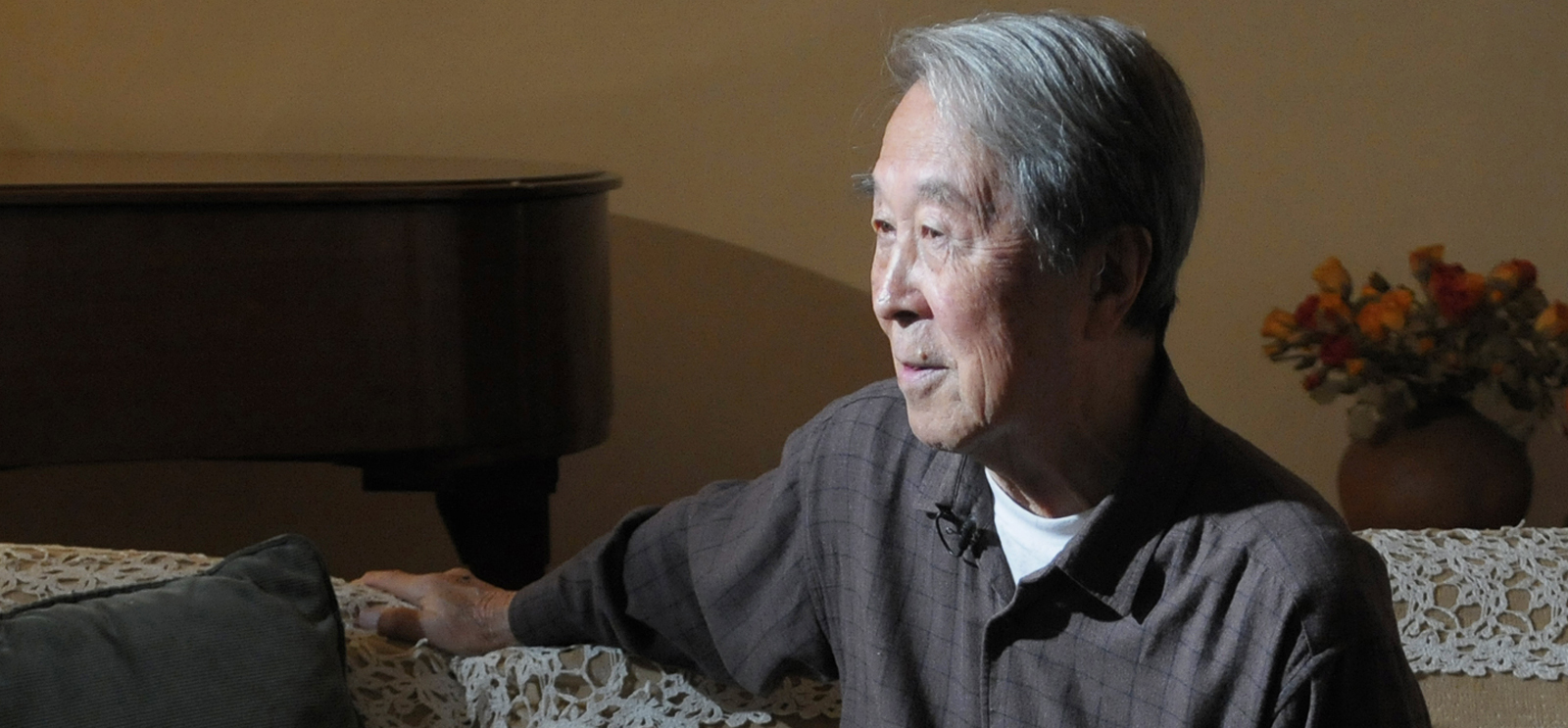
“Yoichiro Nambu is no more,” says former student Madhusree Mukerjee, PhD’89, “and with him is gone an era in physics.” The Japan-born physicist and professor emeritus at the University of Chicago died July 5 of an acute heart attack. He was 94.
In 1960, six years after he joined UChicago as a research associate, Nambu introduced a mathematical model to describe “spontaneous symmetry breaking.” Now a cornerstone of the Standard Model of particle physics, this phenomenon helps explain how subatomic particles interact, governed by fundamental forces of nature. Almost 50 years later, Nambu was a corecipient of the 2008 Nobel Prize in Physics for the discovery of this mechanism.
During a speech in Chicago after winning the Nobel, Nambu explained spontaneous symmetry breaking with an analogy: when a group gathers in a large, open area, people tend to look in different directions. But sometimes when one person looks in one direction, everyone else starts looking in that direction too. That propagation, he said, is a broken symmetry.
Inquiry has gathered a selection of praise and memories of the “gentle genius” from his colleagues and students, who carry on his legacy through their own research and work.
We invite you to share your stories of Nambu in the comments below.

[[{"type":"media","view_mode":"media_original","fid":"3027","attributes":{"alt":"","class":"media-image","height":"1000","typeof":"foaf:Image","width":"844"}}]](University of Chicago Photographic Archive, apf7-00911, Special Collections Research Center, University of Chicago Library)
On his long overdue Nobel Prize
Part of [the delay] had to do with the fact that he was very modest, and did not cheerlead for himself. In the real world, people campaign for the Nobel. He was not like that. He thought the work should speak for itself.—Jeffrey Harvey, Enrico Fermi Distinguished Service Professor in the Department of Physics (New York Times, July 17, 2015)
Why did they wait so long, the Swedes? His work preceded so much important work that other people did and is the cornerstone of the Standard Model of elementary particle physics.—James Cronin, SM’53, PhD’55, Professor Emeritus in the Departments of Astronomy and Astrophysics and Physics and a 1980 Nobel Laureate in Physics (Washington Post, July 18, 2015)
[[{"type":"media","view_mode":"media_original","fid":"3042","attributes":{"alt":"","class":"media-image","height":"576","typeof":"foaf:Image","width":"844"}}]](Photography by Lloyd DeGrane)
Appearances can be deceiving
Once I came upon Nambu laboriously studying a hand-written paper on relativity that an amateur had sent him. Astonished, I asked why he was spending so much time reading a work by someone who was probably a quack. He replied that when Albert Einstein had received a paper out of the blue from an unknown Indian, he’d taken the trouble to read it and understand it. The author was Satyendra Nath Bose and the paper heralded the discovery of bosons; without Einstein’s intervention it may never have seen the light of day. So every time Nambu got something in the mail, no matter how bizarre it looked, he felt obliged to take the trouble to read it, for it might be a hidden gem. The lesson has stayed with me: never judge by appearances.—Madhusree Mukerjee, PhD’89, Thesis Advisee of Nambu (Huffington Post, July 20, 2015)
Magical mind
He was a magician. He would pull one rabbit out of the hat, and another, and then suddenly the rabbits would arrange themselves in a pattern and start dancing in a way you’d never seen before. Where he got the idea, you could never imagine.—Peter G. O. Freund, Professor Emeritus in the Department of Physics (New York Times, July 17, 2015)
Carrying on the Fermi era
Yoichiro Nambu arrived at the University of Chicago at the very end of the Enrico Fermi era and quickly established himself as a key force in maintaining the world-renowned vitality of our physics department and our Enrico Fermi Institute. We will remember him for his quiet dignity, his modesty, and his deep scientific acumen.—Rocky Kolb, Dean of the Physical Sciences Division (UChicago News, July 17, 2015)
Higgs boson contributions
Although my name gets thrown around in this context, it was Nambu who showed how fermion masses would be generated in a way that was analogous to the formation of the energy gap in a superconductor.—Peter Higgs, Professor Emeritus in the School of Physics and Astronomy, University of Edinburgh (Physics World, July 17, 2015)
Quarks and strings
It took more than 20 years to sort out quarks’ properties and how they are held together in triplets and pairs by a “colour” force mediated by gluons to form protons, neutrons, mesons and other particles. But Nambu and Moo-Young Han put most of it together in 1965. As [Murray] Gell-Mann said: “He did this ... while the rest of us were floundering.” In an attempt to better understand the colour force, Nambu went on to co-invent string theory.—Michael S. Turner, Bruce V. and Diana M. Rauner Distinguished Service Professor in the Departments of Astronomy and Astrophysics and Physics (Nature, August 26, 2015)
[[{"type":"media","view_mode":"media_original","fid":"3043","attributes":{"alt":"","class":"media-image","height":"576","typeof":"foaf:Image","width":"844"}}]](University of Chicago Photographic Archive, apf7-00909, Special Collections Research Center, University of Chicago Library)
Unfailing failing kindness
His highly developed sense of etiquette, however, failed him when he was briefly appointed as department chair: reluctant to explicitly say “no” to any question, he would indicate disapproval by pausing before saying “yes.” This led to a certain amount of consternation among his colleagues, once they realized that their requests hadn’t actually been granted.—Sean Carroll, Research Professor in the Division of Physics, Mathematics, and Astronomy, Caltech, and Former UChicago Assistant Professor in the Department of Physics (Sean Carroll Blog, July 17, 2015)
A decade ahead
I had the idea that if I can find out what Nambu is thinking about now, I’ll be 10 years ahead in the game. So I talked to him for a long time. But by the time I figured out what he said, 10 years had passed.—Bruno Zumino, Late Professor Emeritus in the Department of Physics, University of California, Berkeley (Scientific American, October 7, 2008)

For more stories and insight into Nambu’s life and work, read the transcript and listen to audio clips of a 2004 interview conducted by the Niels Bohr Library and Archives.

